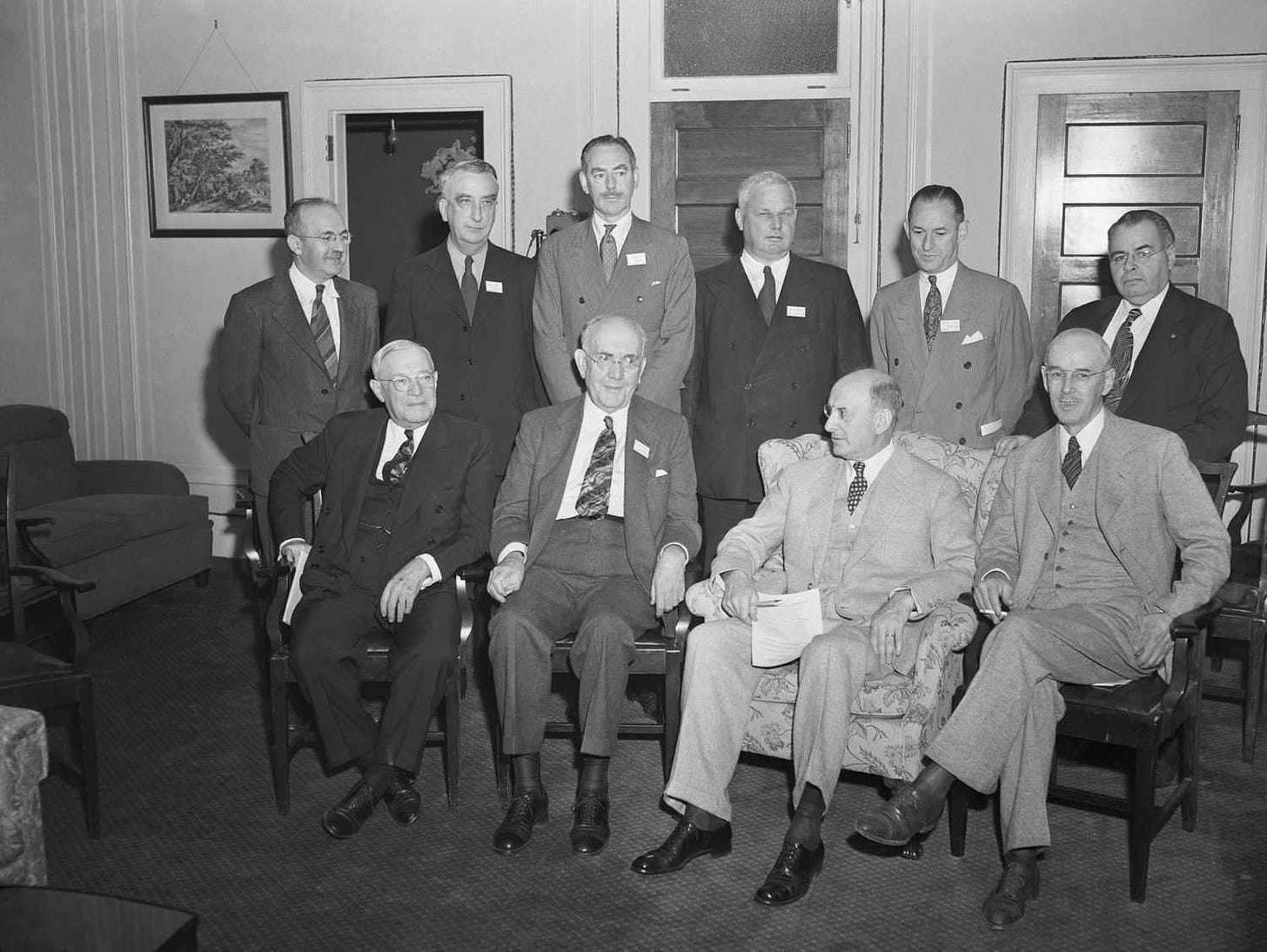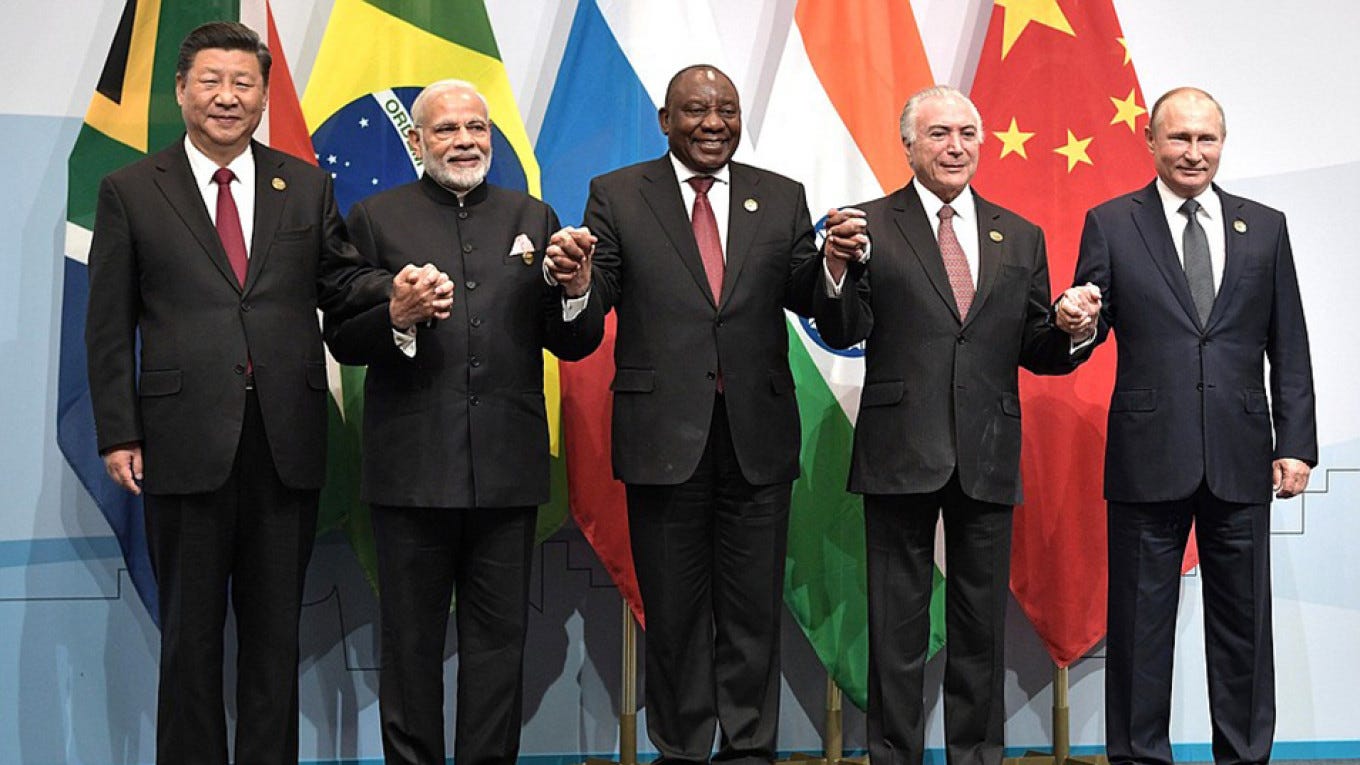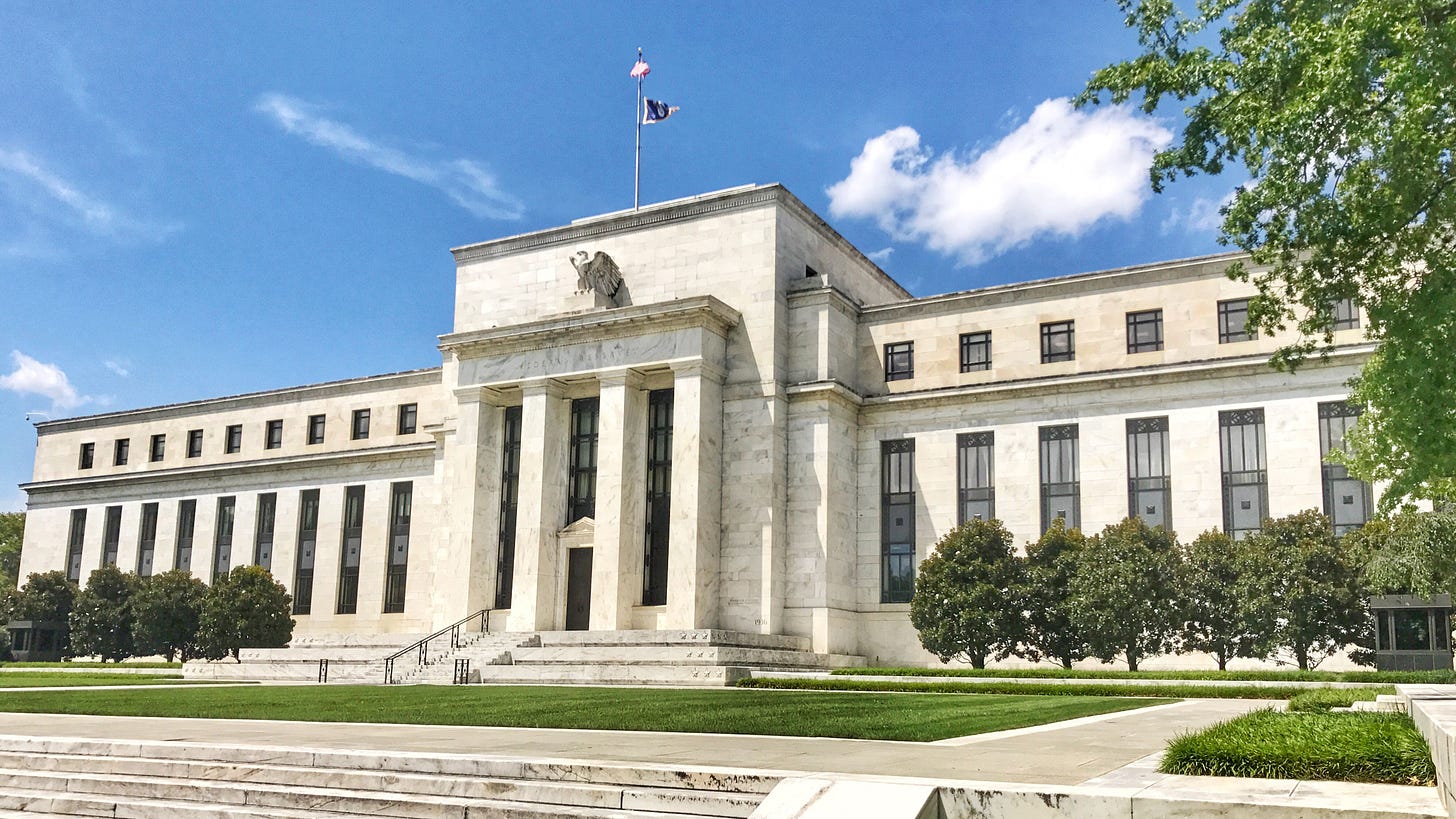BRICS Currency: An Alternative to the Mighty Dollar?
BRICS nations are planning to formulate a new global reserve currency to replace the dollar.
Introduction
The global financial landscape has been dominated by the United States Dollar (USD) for decades, serving as the world’s primary reserve currency and a benchmark for international trade and finance. However, the emergence of the BRICS (Brazil, Russia, India, China, and South Africa) economies as significant players on the global stage has prompted discussions about the possibility of these nations launching their own common currency. This essay aims to explore the potential impact of such an event on the USD and the broader global financial system.

The Signing of the Bretton-Woods Agreement led to the global reserve currency status of the US Dollar.
Historical Context: The Dominance of the USD
The USD’s supremacy as the world’s primary reserve currency traces back to the Bretton Woods Agreement of 1944. Under this system, currencies were pegged to the USD, and the USD itself was backed by gold. Though the gold standard eventually collapsed in 1971 after the historic 15 Aug speech by Richard Nixon, the USD retained its preeminent status due to the size and stability of the US economy, as well as the trust engendered by the institutions that underpin the currency.
In addition, the global oil market, which was generally dictated by the geopolitical considerations put forth by the United States, adopted the US Dollar as the currency of choice for trade. As oil became the most valuable and largest-traded commodity in the world, the status of the US Dollar rose along with it, further reinforcing its status as the primary currency of choice by the rest of the world.

The Petrodollar keeps the US economy afloat.
The Birth of BRICS and Its Implications
BRICS is a grouping of five emerging economies that, collectively, represent a significant portion of the world’s population, land area, and economic output. These nations have grown both economically and politically, leading to discussions about the possibility of launching their own currency as a challenge to the USD’s dominance. Such a move could stem from a desire to reduce dependency on the USD and increase their influence in global financial affairs.

BRICS countries represent around 40% of the world’s population and a large proportion of resources.
Potential Advantages of a BRICS Currency
The BRICS countries are currently working on formulating a currency equivalent that resembles Special Drawing Rights (SDRs) of the International Monetary Fund (IMF), which is essentially a basket of currencies with a specific value that can be used for transactions across countries. It has been called the R5, which stands for the five currencies of BRICS – Ruble, Renminbi, Rupee, Real and the Rand.
There could be a crucial announcement regarding this during the BRICS summit that is slated for later this month, even though most of the foreign ministers of the alliance, especially Dr. S Jaishankar of India, have been downplaying the formulation of the currency.
1. Economic Sovereignty: A common BRICS currency could empower member nations with more control over their economic policies and trade relations. This could lead to reduced susceptibility to external economic shocks and the whims of global financial markets.
2. Trade Facilitation: A BRICS currency might streamline trade among member nations, eliminating currency conversion costs and exchange rate uncertainties. This could foster increased intra-BRICS trade and cooperation.
3. Geopolitical Influence: Launching a new currency could boost the collective geopolitical influence of BRICS nations, allowing them to exert greater influence in global financial institutions and negotiations.
Challenges and Considerations
1. Economic Divergence: One of the primary challenges for BRICS in launching a common currency is the considerable economic diversity among its member nations. Varying inflation rates, growth trajectories, and fiscal policies could complicate the formulation of a coherent monetary policy.
2. Trust and Credibility: Building trust and credibility for a new currency would be a significant hurdle. Investors and international markets have long regarded the USD as a stable and secure reserve. Convincing the global community of the stability of a BRICS currency would be an intricate task. In addition, there is a trust deficit between countries in the grouping too – like India and China. Having fought a major war in 1962, and further skirmishes as recent as 2022, it is difficult to imagine India giving way to a stronger weightage to Renminbi of China, which is already being used as reserve currency in many countries and even SDR baskets.
3. Potential for Fragmentation: Launching a new currency could also raise questions about the unity of the BRICS bloc. Disagreements over monetary policy, exchange rates, and economic priorities could strain the cooperation required to sustain a common currency.
Impact on the USD
The launch of a BRICS currency would likely have profound implications for the USD and the global financial system as a whole.

The Federal Reserve, US Central Bank, will have to bring in extensive reforms and frugal policies to rein in a major blow to the US Dollar if BRICS decides to launch their own reserve currency.
1. Reserve Currency Status: The most immediate impact would be on the USD’s reserve currency status. If the BRICS currency gained traction as a viable alternative, central banks around the world might diversify their reserves away from the USD, leading to a decline in its value and significance. This could lead to a catastrophic fall in the value of the US Dollar and USD-dominated instruments like Treasury Bonds and Oil futures. Such an event would lead to a severe depression not only in the US, but also the rest of the world. It could also impact trade transactions and other currencies.
2. Trade and Finance: The USD’s use as the primary currency for international trade and finance might diminish if BRICS nations opt to use their own currency for transactions among themselves. This could lead to a reduction in demand for USD and, consequently, a potential weakening of its value.
3. Interest Rates and Debt: The USA’s ability to borrow at lower interest rates, a privilege associated with the USD’s status, could be affected. As demand for USD decreases, borrowing costs might rise, impacting the US government’s ability to manage its debt.
4. Geopolitical Implications: A significant shift away from the USD could impact the USA’s geopolitical influence. The use of the USD as a tool for sanctions and diplomacy might be curtailed, reshaping global power dynamics.
Responses and Adaptations
1. USD Devaluation Mitigation: To mitigate the devaluation of the USD, the USA could adopt prudent fiscal and monetary policies. Ensuring a strong and stable economy would help maintain investor confidence in the USD.
2. Reforming International Institutions: The launch of a BRICS currency might stimulate discussions about reforming international financial institutions like the International Monetary Fund (IMF) and the World Bank. These discussions could lead to more inclusive decision-making processes and the reevaluation of voting rights, reflecting the changing global economic landscape.
3. Enhanced Cooperation: Instead of solely perceiving the BRICS currency as a challenge, the USA could choose to engage in closer economic cooperation with BRICS nations. Collaborative efforts might lead to the development of new financial instruments and mechanisms that benefit all parties involved.

A secure global economy needs a reserve currency that cannot be manipulated by one player.
What Next?
The launch of a BRICS currency has the potential to significantly impact the USD and reshape the global financial landscape. While there are challenges and uncertainties surrounding such an endeavor, it is clear that the USD’s status as the world’s primary reserve currency is not guaranteed in perpetuity. The rise of the BRICS economies and their pursuit of economic and geopolitical influence could trigger a paradigm shift, forcing the international community to adapt and evolve in response to a changing world order. How nations navigate this complex terrain will play a pivotal role in determining the future trajectory of global finance.

Well-written article and easy to understand why BRICS currency could be a big deal! Looking forward to more on this topic.